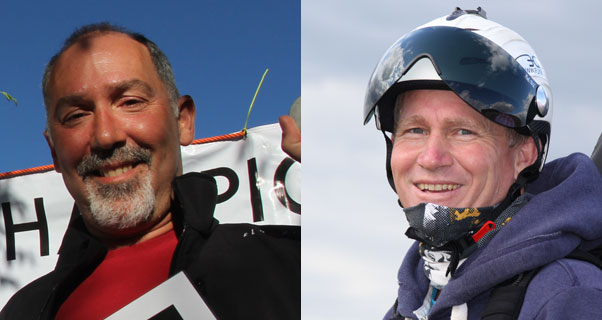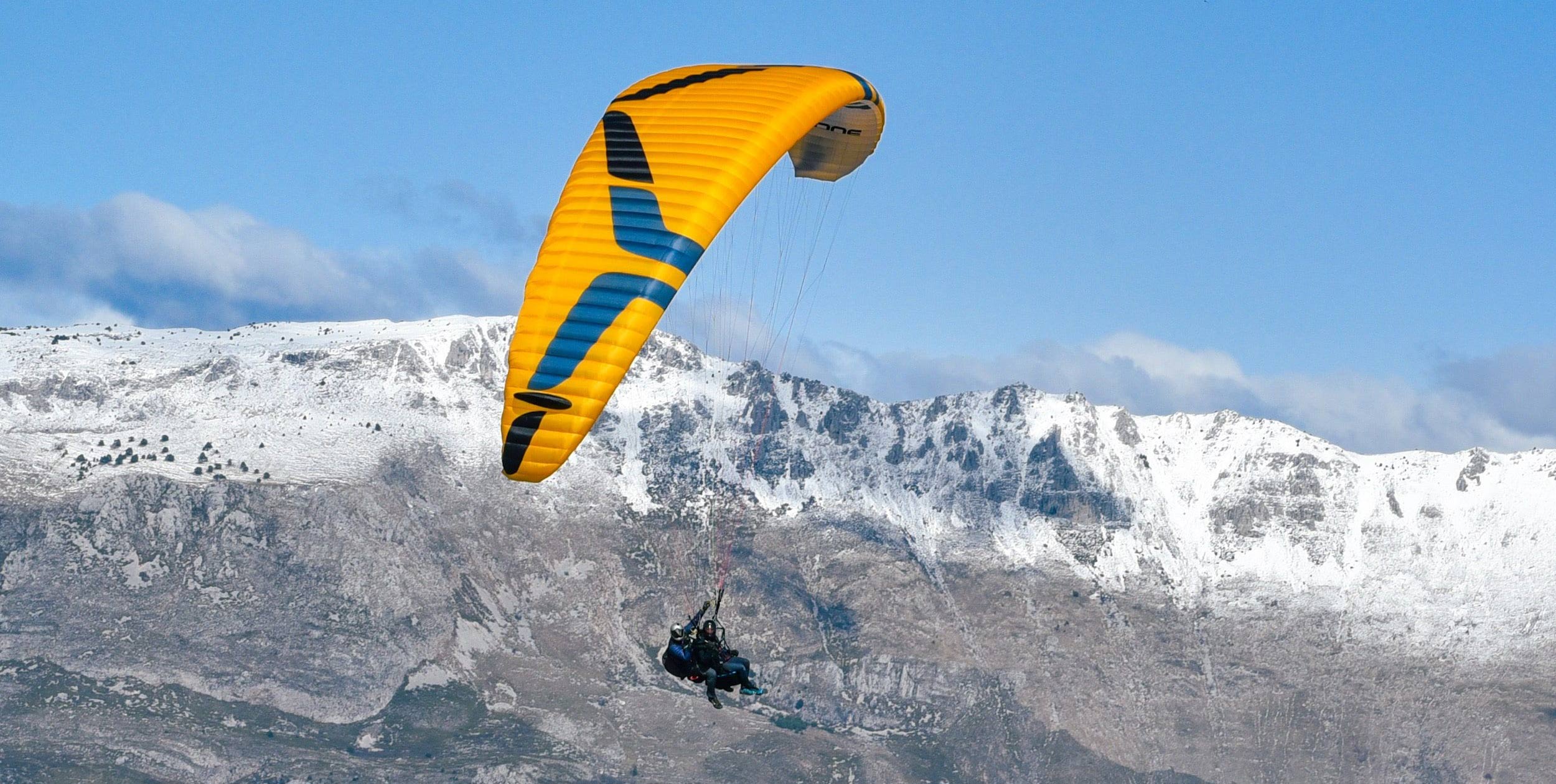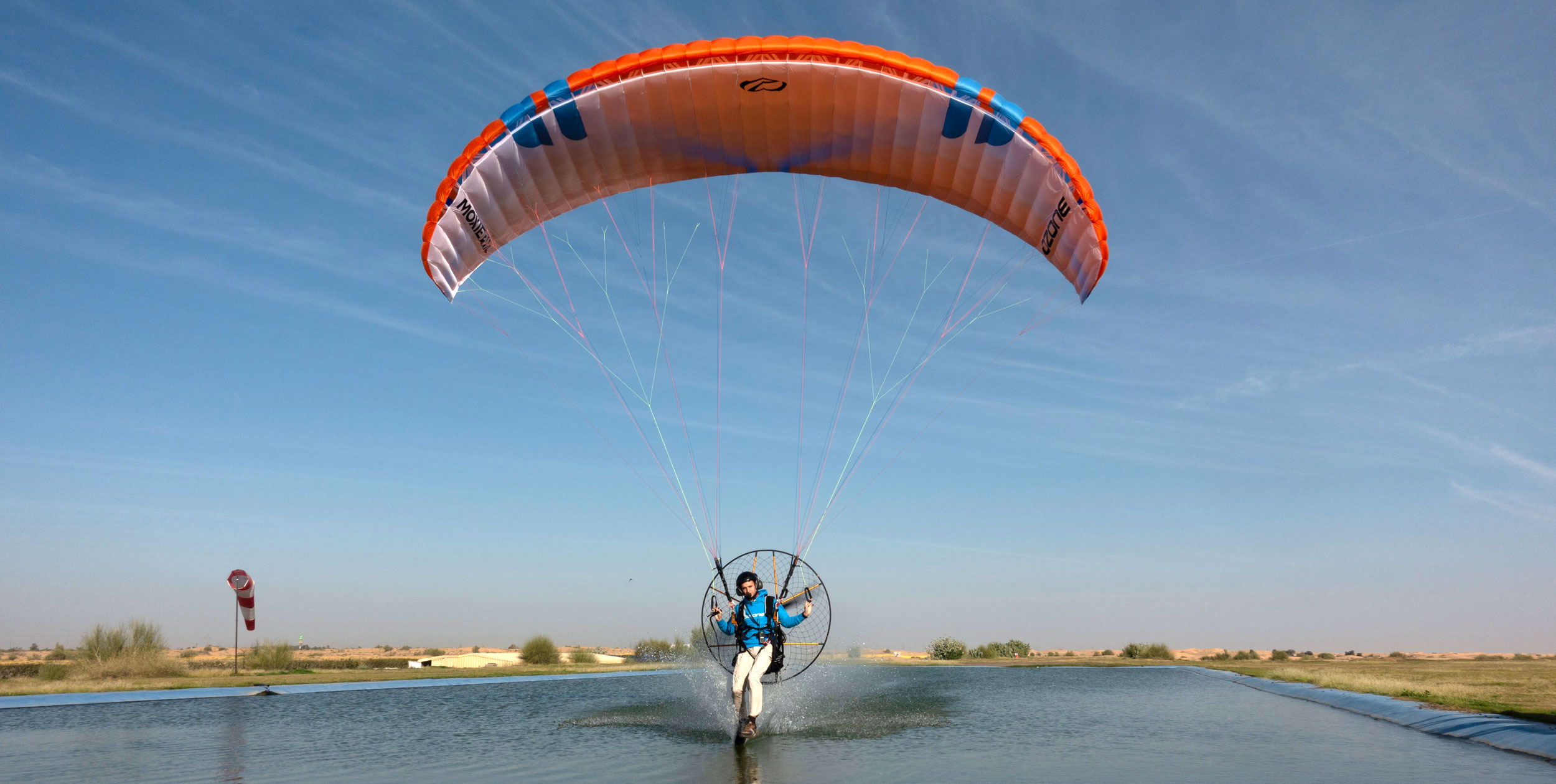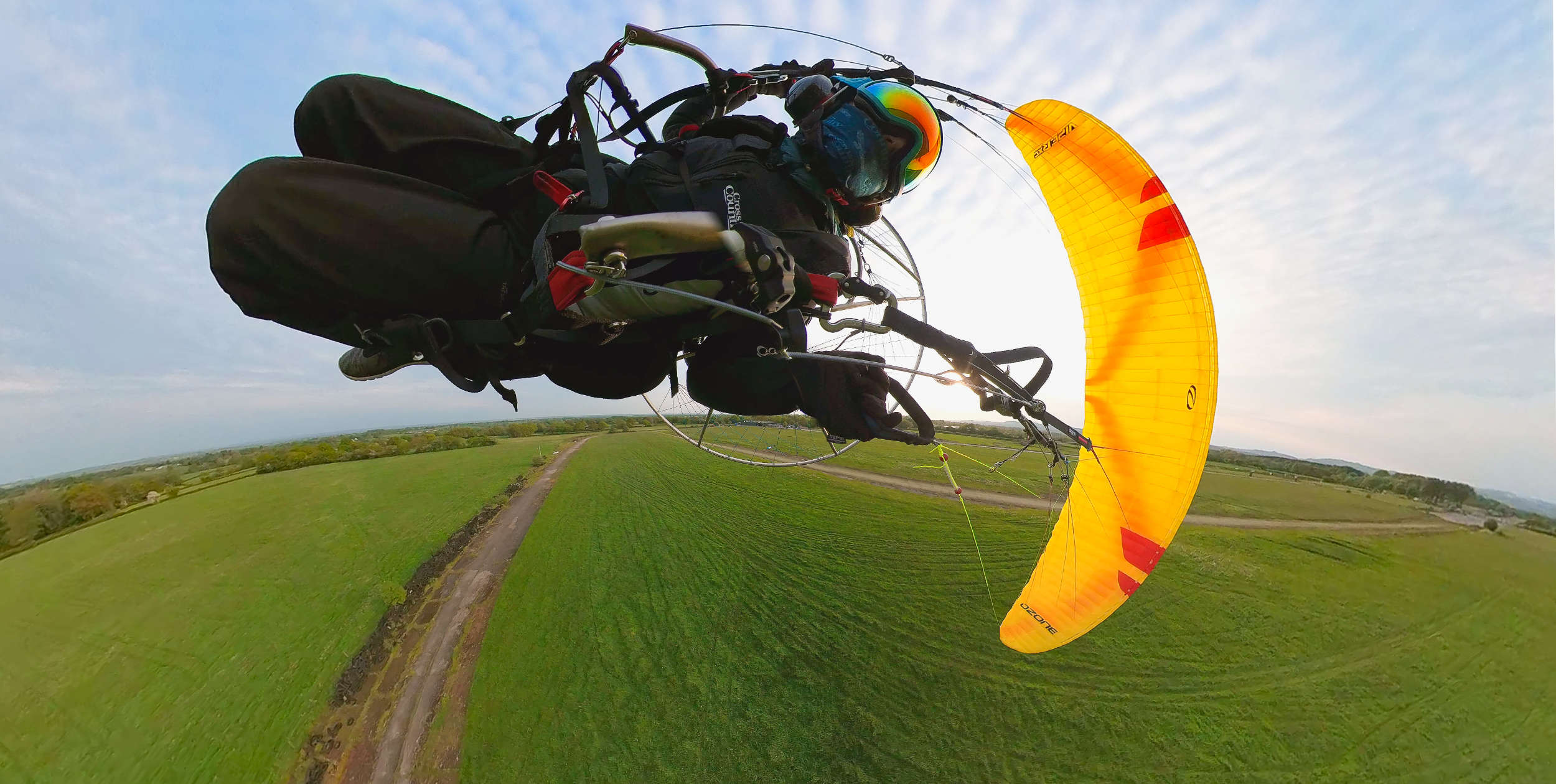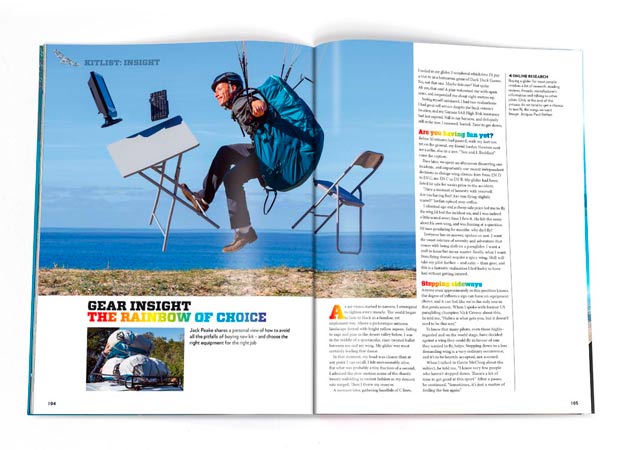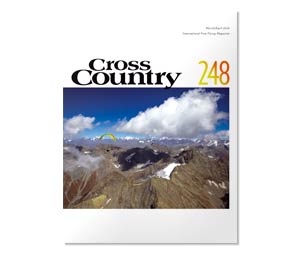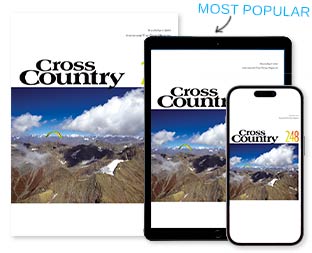Editor Ed Ewing asks Cross Country magazine’s technical experts Bruce Goldsmith and Adrian Thomas about the Ozone Enzo 2 controversy
With GIN Gliders declaring the Paragliding World Cup Superfinal Enzo 2 controversy a “disgrace to the sport” and the winning Enzo 2s on their way to Switzerland to be compared with a sample glider, we asked two of Cross Country magazine’s long-standing contributors to explain more about the technical issues behind the Enzo 2 controversy.
Bruce Goldsmith and Adrian Thomas are two experienced competition pilots with a lot of technical know-how between them.
They both write for Cross Country magazine: Bruce, who was 2007 Paragliding World Champion and is a paraglider designer, writes the Icaristics column; Adrian contributes technical articles and is on-hand as a contributing technical editor. He is also one of the top contributors and clearest heads on ParaglidingForum.com.
Bruce was a founding member of Ozone but split from the company early on. He worked for Airwave for over a decade before moving to Advance. He set up his own company, BGD Gliders in 2012. He has been a designer, test pilot and comp pilot for 25 years.
Adrian is a professor of biomechanics at Oxford University – he studies how birds fly. A published author on flight he is a competition pilot and has been British Paragliding Champion several times. He contributes technical knowledge on glider design to different manufacturers on a freelance basis, and has most recently worked with GIN developing the Boomerang 9, another competition wing flown at the Superfinal.
Bruce, can you explain about pinches and what their usual role is in testing and certifying a glider?
Yes, it is common practice to adjust tension on prototypes using pinches. Applying trailing edge pinches allows you to change the way the sail behaves: it’s an important part of the design and affects the billow in the sail.
If you make the trailing edge shorter, then the tips are pulled back, making them both slower and more swept.
Remember that it is basically the whole span of the glider we are talking about here, not just trailing edge length.
Because the trailing edge is quite close to straight, the trailing edge length is very close to the flat span of the wing.
So this is not some obscure value we are measuring here, it is the span itself.
If you wanted to measure anything on a glider, this would be it, and this is exactly what the FAI is planning to measure in future [on the new Competition Class that is in development].
That is also why it is being measured at the PWC. It is currently the only measurement of the sail and it is the most basic measurement you can do.
On a comp wing like the Enzo 2, what is the effect of removing 30-40cm on the trailing edge? What does it do to performance, safety and EN conformity?
Changing the trailing edge tension can have no effect or a huge effect depending on the wing. If the trailing edge is effectively too long then shortening it will not do a lot.
However, if it is the correct length then this change will change the whole wing completely.
After a change like that [shortening the trailing edge by 30-40cm] I would typically expect the top speed to be lower, the glide performance worse and collapse recovery to be better.
Lengthening the trailing edge would do the opposite.
Do you think the Superfinal result is valid?
I do not think that the provisional Superfinal results should stand. It is now clear the Enzo 2 flown in the comp was not the certified version.
I believe the existing rules to be clear on this. There is no grey area. The wings must be identical and they were not.
These gliders did not conform dimensionally to the test specimen that ‘used to be’ a reference at Air Turquoise.
I know that this is very hard for all those PWC pilots with the wings in question, but I feel there is no choice but to apply the rules. If not, why bother having any rules?
Adrian, you’ve been involved in the development of the forthcoming Competition Class. I understand that introducing the trailing edge measurement as a rule has been under discussion, most for it, others against it. Can you explain a bit more about it?
[It’s] such a simple measurement – one that can easily be done in a few seconds with a tape measure. Indeed one of the first things we do when comparing one of our wings with one from the opposition is lay one on top of the other.
Differences in span, area and trailing edge length are then really obvious – since when the glider is laid out flat the tips will be further forwards if the trailing edge is longer.
So measuring trailing edge is a simple, quick, reliable way to tell whether one individual glider of a model has been modified from the norm.
How does changing the length of the leading edge change performance?
One of the simplest things to do to change a wing’s performance is to change its designed angle of attack.
In some design programs it involves changing one single number. What changing that single number does is change the angle of attack where the wing structure is perfectly tensioned.
When you push the speedbar you pull down the A-lines, but on a two-liner the B-lines stay the same length so the sail pivots around the Bs.
Because of the arced shape the trailing edge gets longer and the leading edge gets shorter. The sail is only perfectly tensioned at one angle of attack.
Lengthening the trailing edge by 40cm would mean that the wing is at its optimal angle of attack at really quite a high speed. More structurally stable with better sail tension and thus lower drag at high speeds.
All glides are done at high speeds in competition these days. There are always trade-offs, and with a longer trailing edge the wing would be more wobbly at trim speed and in climbs, and the collapse-recovery behaviour might be different.
Do you think the Enzo 2.1 – the one with the longer trailing edge – is certified EN D, like the Enzo 2?
Ozone’s earlier declarations published on the taskboard at the Superfinal stated that the Superfinal Enzo 2s “conform” to the type stored at the Air Turquoise testing centre.
[Air Turquoise chief test pilot] Alain Zoller confirmed that that was not true, since the two differ by 30-40cm in trailing edge length. The gliders flown at the Superfinal were, therefore, not certified.
Ozone put the difference down to a mistake in pinches on the glider not translating through to production.
Ozone’s more recent statement suggests that the 40cm difference in trailing edge was due to their having taken ‘pinches’ in the trailing edge in the wing they sent for certification. Forty centimetres is about the width of four entire cells. That is not a subtle change.
Correspondence from the Paragliding Manufacturers’ Association [on Monday] makes an interesting point – by taking the pinches out, Zoller has made it impossible to confirm what the configuration of the original certified version of the Enzo2 actually was.
The PMA members are outraged at all of this – because it brings the EN certification scheme into disrepute.
The EN system was never designed to accommodate competition gliders was it? It’s about recreational gliders, not bleeding-edge performance.
There is a real problem with the current EN certification scheme because the only way we can test whether a glider conforms to EN is by getting the test body to re-test it.
The EN scheme leaves the manufacturers to determine the tolerances they build to. In the Enzo 2 case the initial publication from Ozone, stating that the Superfinal wings ‘conform’ to the tested type imply a 40cm tolerance – that is the only way they could ‘conform’.
In any case, since the manufacturers are allowed by EN to chose their own tolerances, that means the EN system amounts to manufacturer self-certification.
For myself, I am reasonably happy with that – I have flown enough protos to know an evil wing when I fly one. The vast majority of pilots are lucky enough not to have had that experience so they have to rely on the honesty of the manufacturers.
And what is your thought on whether the Superfinal is valid or not?
I have spoken to GIN and heard from Nova, UP and Sol, and they all think the problem is so drastic the Superfinal should be considered invalid. None of them want to just kick out the Enzo 2s.
• Got news? Send it to us at news@xccontent.local
Buy and sell gear on Skyads.aero

